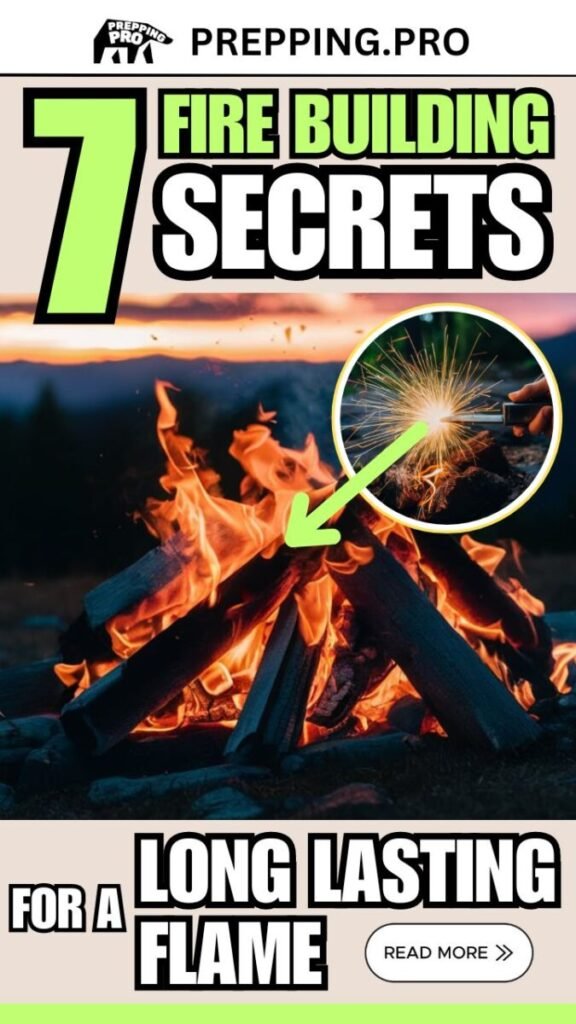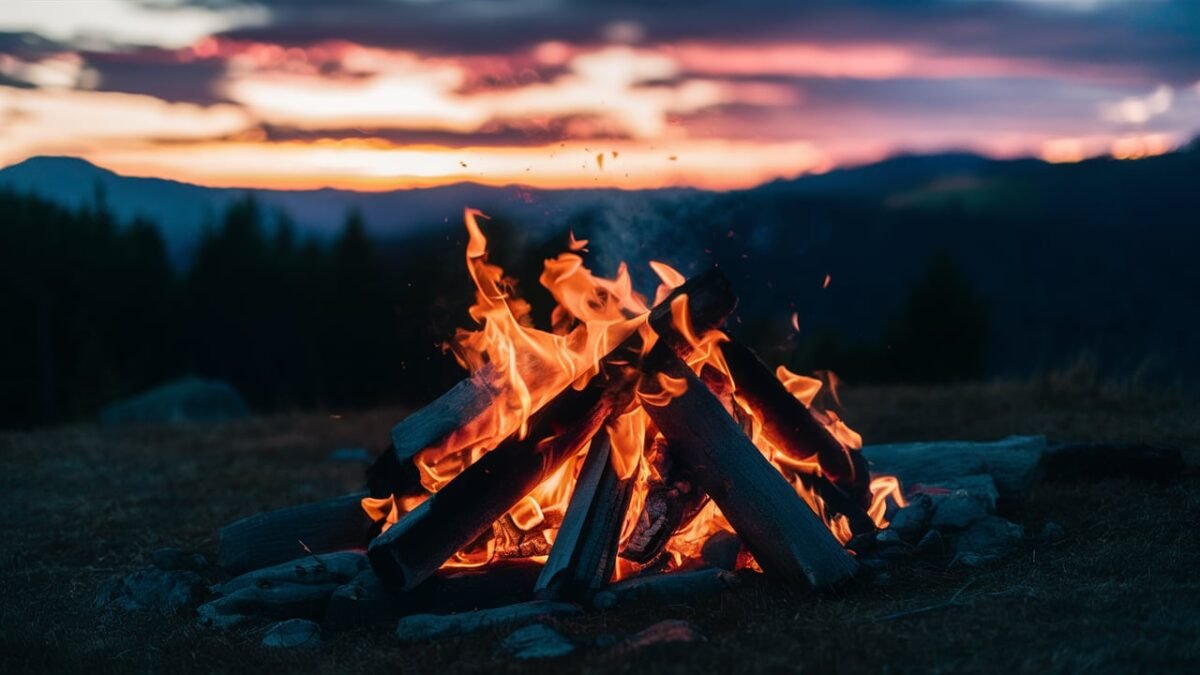Mastering the art of building and maintaining a campfire is an essential skill for survival in the wilderness.
This article reveals seven secrets to achieve campfire mastery, ensuring you can create and sustain a long-lasting flame in various outdoor conditions.
These techniques will enhance your outdoor survival skills and prepare you for any camping situation.
In this comprehensive guide, you’ll learn everything from selecting the perfect campsite to advanced fire-building techniques that will elevate your camping knowledge and campfire mastery to new heights.

Key Takeaways:
- Choose an ideal campfire location for safety and efficiency
- Select and prepare the right materials for a long-lasting fire
- Master various fire-starting techniques for different scenarios
- Build and maintain the perfect fire structure
- Ensure campfire safety and practice responsible fire management
- Learn advanced campfire skills for survival situations
Table of Contents
1. Choose the Perfect Campfire Site
The foundation of campfire mastery begins with selecting an ideal location.
A well-chosen site ensures safety, efficiency, and minimal environmental impact.
Fire builders should prioritize natural wind barriers and clear areas.
Proper site selection reduces fire spread risks and maximizes heat retention.
Adherence to leave no trace principles is crucial for responsible wilderness camping.
- Look for natural wind barriers like large rocks or dense vegetation
- Clear a 10-foot diameter area of flammable materials
- Create a fire pit by digging a shallow depression or circling with rocks
- Ensure the fire is at least 15 feet away from tents and overhanging branches
| Site Selection Criteria | Importance |
|---|---|
| Wind protection | High |
| Clearance from vegetation | Critical |
| Proximity to water | Medium |
| Flat ground | High |
| Distance from camp | Medium |
2. Gather and Prepare the Right Materials
Successful fire building techniques rely on proper material selection and preparation.
Experienced campers understand the importance of gathering a variety of tinder, kindling, and firewood.
For a comprehensive guide on camping essentials, check out our article on camping knowledge.
Firewood preparation is a critical step in ensuring a long-lasting flame. Proper sizing and arrangement of materials allow for efficient burning and easy fire management.
- Collect dry tinder such as bark fibers, dried grass, or paper
- Gather pencil-sized twigs for kindling
- Select a variety of wood sizes, from small branches to larger logs
- Split larger logs to expose dry inner wood
| Material Type | Ideal Size | Quantity Needed |
|---|---|---|
| Tinder | Thumb-sized | Large handful |
| Kindling | Pencil-sized | Armful |
| Small branches | 1-2 inches | Several bundles |
| Logs | 3-6 inches | 5-10 pieces |
3. Master Fire-Starting Techniques
Effective fire-starting is a cornerstone of campfire mastery.
Survivalists must be proficient in various methods to adapt to different situations and available resources.
For a detailed guide on fire-starting, visit our page on methods to start a fire.
Fire-starting techniques range from modern conveniences to primitive methods. Each approach has its advantages and applications in survival scenarios.
- Use waterproof matches or a reliable lighter as your primary fire starter
- Practice primitive methods like the bow drill or flint and steel
- Carry multiple fire-starting tools in your survival kit
- Experiment with natural accelerants like pine resin or birch bark
| Fire Starting Method | Difficulty | Reliability |
|---|---|---|
| Matches/Lighter | Easy | High |
| Ferrocerium rod | Moderate | High |
| Bow drill | Difficult | Moderate |
| Flint and steel | Moderate | High |
| Solar ignition | Moderate | Weather-dependent |
4. Build the Perfect Fire Structure
Fire structure is crucial for maintaining a long-lasting flame. Different configurations serve various purposes and adapt to available materials.
Understanding the role of fire in survival can further enhance your fire-building skills.
Experienced campers choose fire structures based on their intended use and environmental conditions.
Proper construction ensures efficient burning and easy maintenance.
- Start with a teepee structure for quick ignition
- Transition to a log cabin style for a longer-burning cooking fire
- Use a star configuration to conserve fuel during overnight burns
- Adjust the structure as needed to control heat output and flame size
| Fire Structure | Best Use | Burn Time |
|---|---|---|
| Teepee | Quick start | Short |
| Log cabin | Cooking | Medium |
| Star | Overnight | Long |
| Lean-to | Windy conditions | Medium |
5. Maintain and Feed Your Campfire
Sustaining a long-lasting flame requires proper maintenance and feeding techniques.
Skilled fire tenders understand how to add fuel and manage airflow for optimal burning.
For more advanced techniques, explore our guide on building a fire with wet wood.
Campfire maintenance involves regular attention and adjustment. Proper techniques ensure a consistent flame and efficient use of resources.
- Add new fuel gradually to maintain steady heat
- Arrange logs to create air pockets for better oxygen flow
- Use long sticks or fire tongs to safely adjust burning materials
- Maintain a bed of hot coals for cooking and long-term heat
| Maintenance Task | Frequency | Importance |
|---|---|---|
| Add fuel | As needed | High |
| Adjust logs | Every 30 mins | Medium |
| Tend coals | Hourly | High |
| Clear ash | Daily | Medium |
6. Practice Campfire Safety and Control
Campfire safety is paramount in wilderness settings.
Responsible campers prioritize fire control and risk mitigation to protect themselves and the environment.
Understanding survival threats can help you better prepare for potential risks.
Safety measures include proper fire containment, extinguishing techniques, and awareness of environmental conditions.
These practices prevent wildfires and ensure a positive camping experience.
- Create a fire barrier using rocks or by digging a shallow trench
- Keep a water source or fire extinguisher nearby
- Monitor wind conditions and adjust the fire accordingly
- Fully extinguish the fire before leaving the site or going to sleep
| Safety Measure | Purpose | Implementation |
|---|---|---|
| Fire barrier | Containment | Rocks or trench |
| Water source | Extinguishing | Bucket or extinguisher |
| Wind monitoring | Fire control | Regular checks |
| Full extinction | Wildfire prevention | Douse and stir ashes |
7. Master Advanced Campfire Skills for Survival
Advanced campfire mastery includes specialized techniques for survival situations. These skills can be crucial in emergency scenarios or extended wilderness stays.
For a comprehensive overview of essential skills, check out our article on timeless survival skills.
Survivalists develop these advanced skills through practice and knowledge of fire behavior. Mastery of these techniques enhances overall outdoor competence.
- Create a Dakota fire hole for a smokeless, wind-resistant flame
- Build a long-log fire for extended overnight burning
- Use fire for water purification and emergency signaling
- Construct a reflector wall to maximize heat reflection towards your shelter
| Advanced Skill | Application | Difficulty |
|---|---|---|
| Dakota fire hole | Concealment | Moderate |
| Long-log fire | Overnight warmth | Easy |
| Water purification | Survival | Moderate |
| Signal fire | Rescue | Easy |
Conclusion
Mastering the art of campfire building and maintenance is a valuable skill for any outdoor enthusiast or survivalist.
These seven secrets provide a comprehensive guide to creating and sustaining a long-lasting flame in various wilderness conditions.
By practicing these techniques and prioritizing safety and environmental responsibility, you’ll enhance your outdoor survival skills and become a true master of the campfire.
Remember, campfire mastery is not about being a pyromaniac, but about respecting the power of fire and using it wisely as a tool for survival and enjoyment in the great outdoors.
Continue to practice and refine your skills, and you’ll be well-prepared for any wilderness adventure that comes your way.
For more advanced survival techniques, explore our guide on survival techniques.


